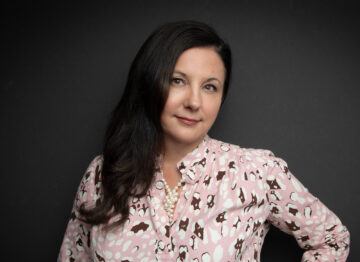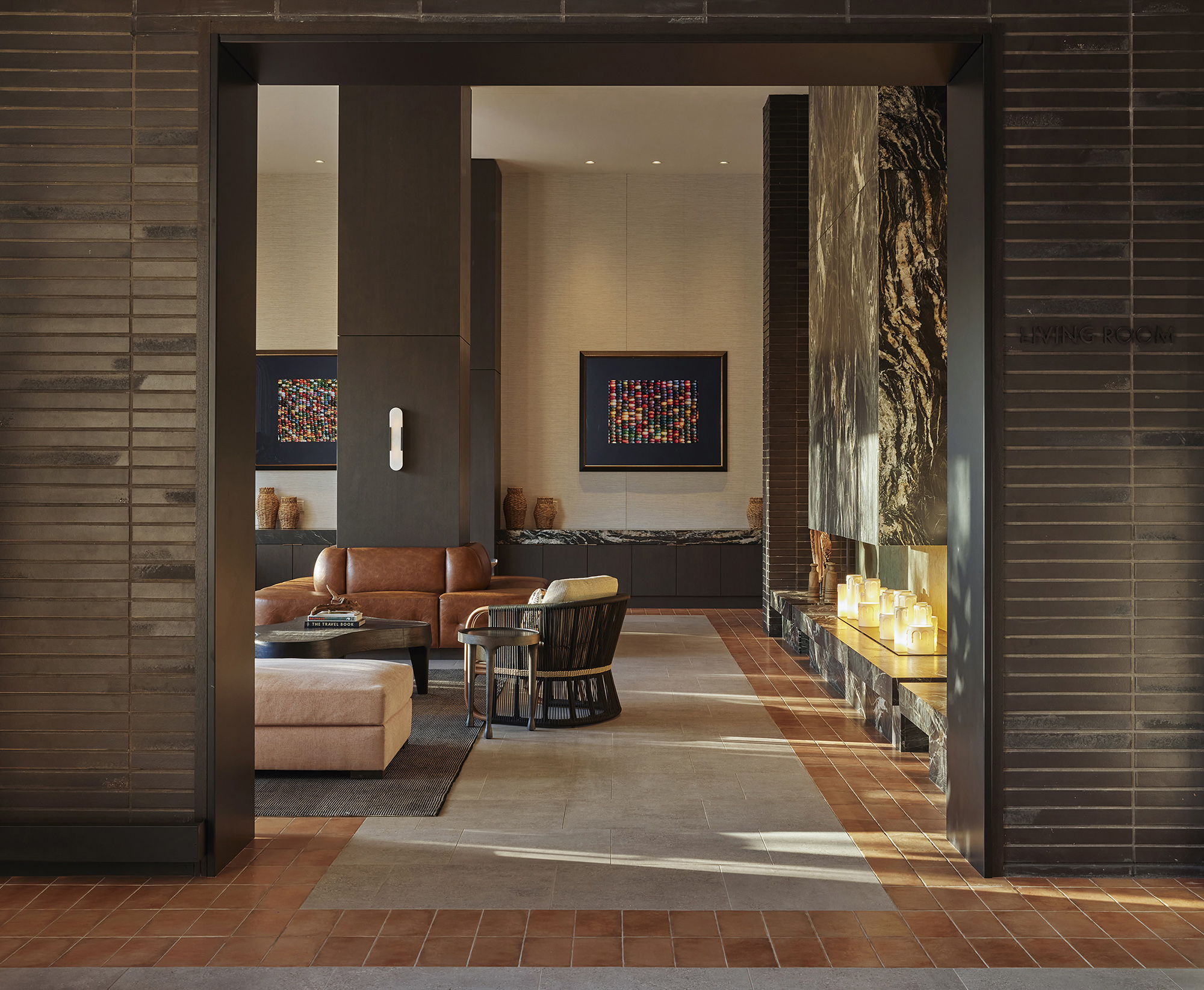
In the heart of San Antonio, Kimpton Santo emerges as a study in creative curiosity. Interlacing contemporary architecture with an 1850s German Schoolhouse, this distinctive hotel radiates an atmosphere that rewards the inquisitive. “This site is extraordinary in how it embodies convergence,” explains Veronica Volborth, KBAA art director. The intersection of elements extends throughout the property: positioned at the Central Business District and La Villita (the city’s oldest neighborhood), the hotel weaves Bauhaus influences with original brick walls and blends German heritage with Mexican culture against a historical Texas backdrop.
For Kevin Barry Art Advisory and design team KTGY, the art program unfolded within the juxtaposing elements. Embracing curiosity as both method and muse, we embarked on a journey of discovery—with San Antonio’s rich cultural landscape as the guide. “We explored local artists’ studios and galleries,” notes Gina Deary, Principal of KTGY, “building genuine connections between the art, the place, and people.” “While KBAA collaborates with talented artists across the country,” Volborth shares, “engaging with local creators brings authentic perspectives that tell the story of a place through the eyes of those who know it intimately.”
What surfaced was an incredible history of weaving and ceramic arts—alongside a cultural heartbeat of joy. Integrating the Bauhaus design aesthetic with earthy, honest materials like textiles and clay, the art program and the architecture merge as a sophisticated representation of San Antonio’s complex identity. Dozens of small moments invite guests to discover the unexpected in this uniquely multifaceted destination.

By whole-heartedly following our curiosity in what makes San Antonio unique, we materialized an art program that is woven into the tactile and emotional experience of the space itself. In the dining room, David Hicks’ ceramic sculpture creates a dynamic relationship with its audience. “Art should evolve with its viewer,” Hicks shares. “As you move around the piece, you’ll find your own connections to agriculture, land, and nature based on your personal experiences.” His composition arranges vessels and forms that speak to each other, creating something greater than the sum of its parts.
Local artist Ansen Seale brings his series “The Corn Crib” to the hotel, exploring corn’s deep roots in Texas culture, while Louis Vega Treviño’s cocktail napkin series plays with perception, resembling intricate weavings from a distance while revealing their unexpected medium up close. In the prefunction ballroom, Kevin Chupik merges pop art with western iconography to create a contemporary (and humorous) conversation with the region’s heritage, while Argentinian artist Nicolás Leiva’s ceramic globes introduce moments of exuberance against the simplicity of dark brick. For Austin-based muralist DAAS, curiosity came to life through an exploration of how abstract forms and colors could express the movement of Mexican dresses in dance .
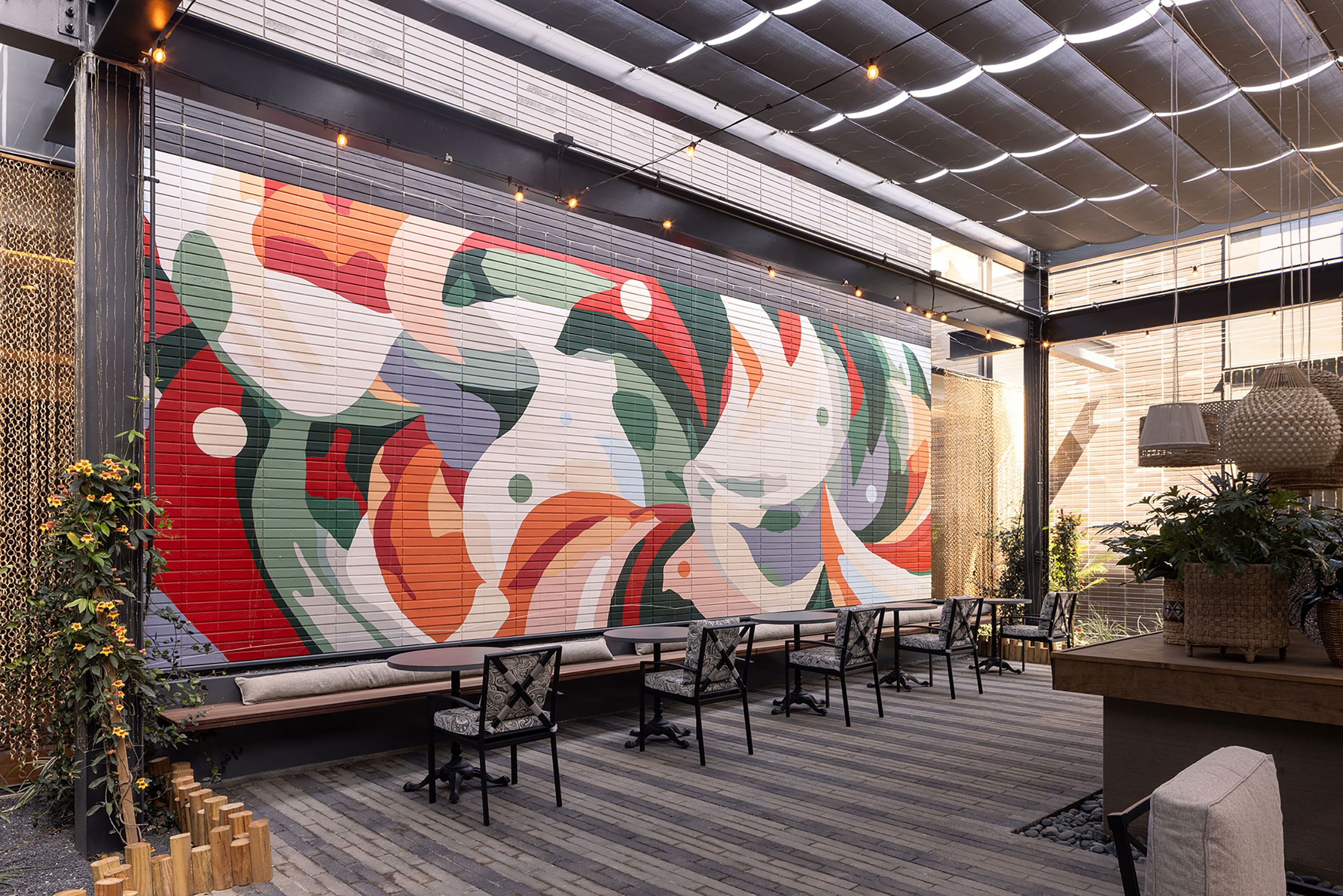
“Working with the Texas Historical Commission gave us access to these amazing images. Texans care deeply about preserving their state’s heritage, and this collaboration helped us connect the building’s past with its exciting new chapter.”
— Veronica Volborth, KBAA
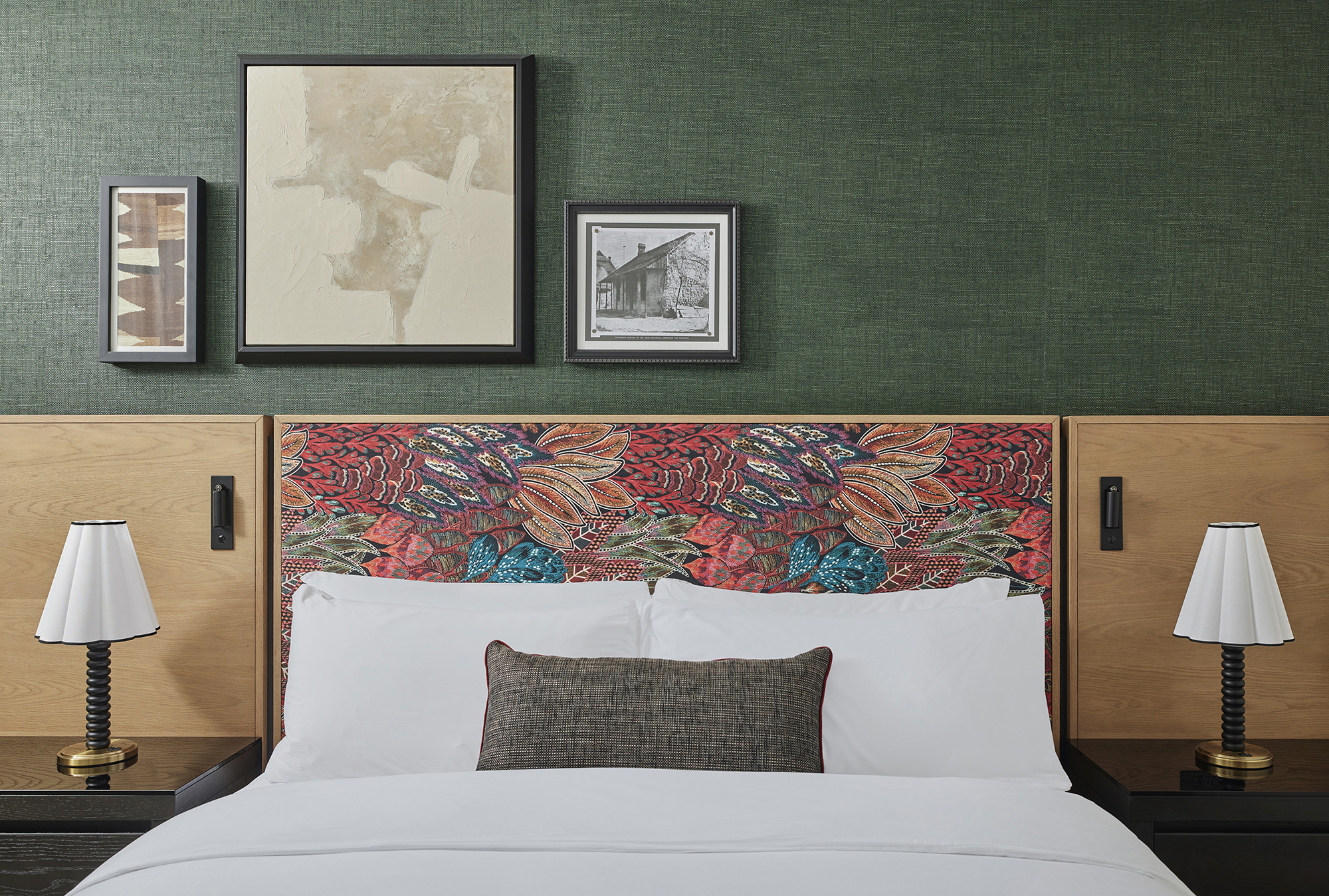
The guest rooms offer their own moments of discovery with the help of the Texas Historical Commission, who partnered with KBAA providing vintage photographs of a German Schoolhouse. They create layers of narrative, hanging alongside embellished textural prints and framed weavings.
Sometimes the most remarkable discoveries happen by chance. Such was the case with Doerte Weber’s fiber art installation floating above the Kimpton Santo’s lobby bar, one of Kimpton Santo’s most distinctive and captivating installations. What began as a scheduled studio visit with photographer Ansen Seale evolved into a serendipitous introduction to Weber, Seale’s wife, studio mate, and an accomplished weaver. “Weaving was central to the concept,” states Deary, “so finding Doerte… it was perfect.”
“You only discover these special artists, these special moments, if you go out and see what really inspires you.”
—Gina Deary, KTGY
Weber’s suspended textile panels draw inspiration from multiple traditions: the experimental approach of Bauhaus women weavers and the cultural tapestry of the locale itself. “I immersed myself in San Antonio’s history and heritage, letting those elements shape my work,” Weber explains. Each of the four fiber panels represents the city from the corresponding direction, crafting a dimensional story of place.
To the south, vibrant colors celebrate the city’s dominant Hispanic culture. Western blues reference the life-giving San Antonio River just three blocks away. Northern patterns honor the German settlers who established the King William neighborhood, and the eastern section features a “crazy quilt” of merging colors representing East San Antonio’s role as a cultural melting pot.
The installation transforms a functional space into a moment of artistic inquiry. “How the bar connects the influence of Mexico, the river, the hill country and ties to German immigrants that came here—it really sparks conversation,” notes Marla Segura, Marketing Manager for White Lodging, the hotel’s owner and operator.
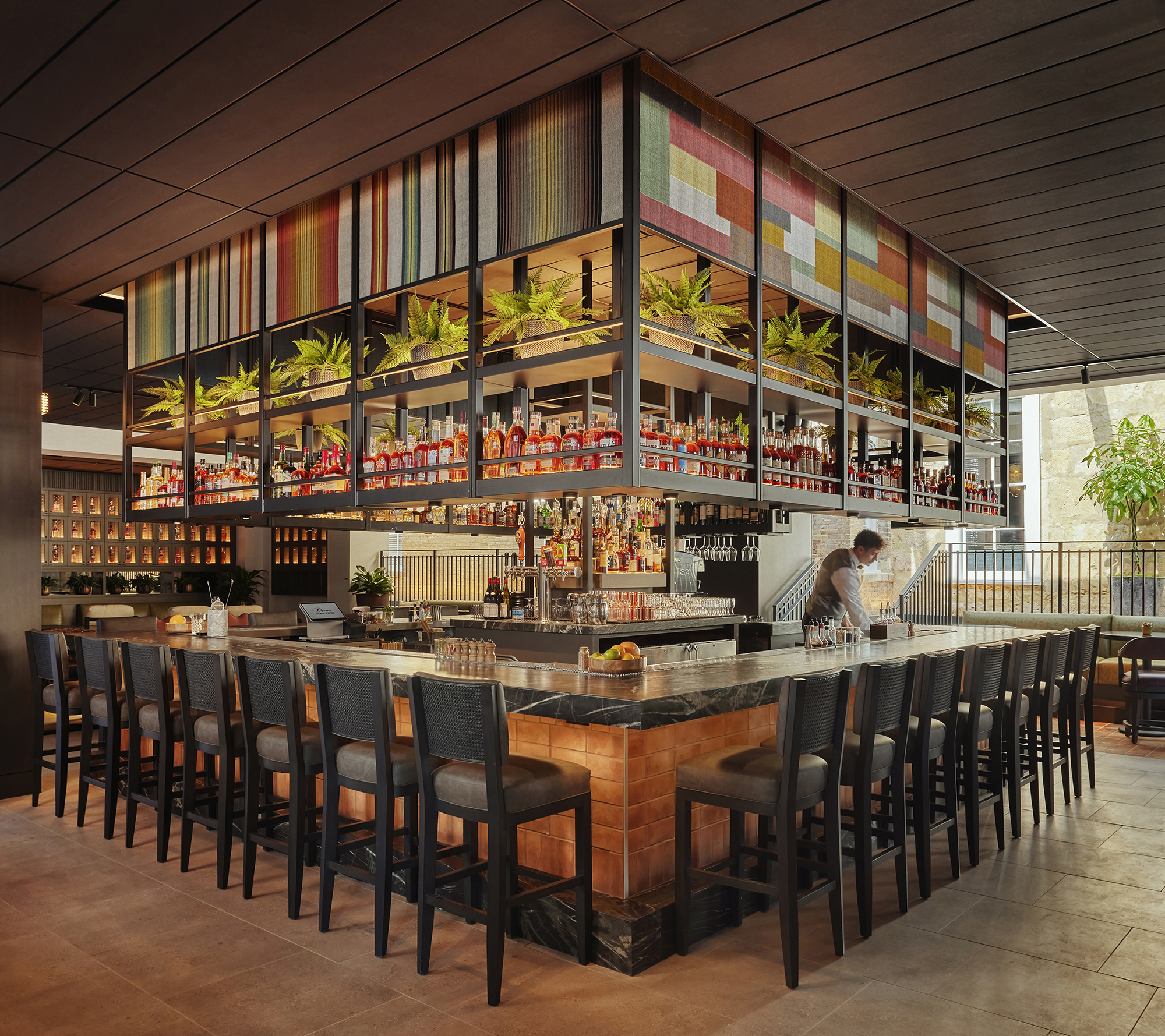
Weber’s work naturally awakens the inquisitive spirit. “I love to tell stories through my weaving,” she says. “The process itself creates connections—both structurally and thematically— which makes it a perfect medium for exploration.” Through her textiles, Weber poses questions about identity and place which invite viewers on their own journey of discovery.
“Art offers the gift of a fresh perspective. I hope that those who see my work will feel inspired to look more closely, to ask questions, and perhaps even to explore—whether that means strolling along the River Walk or venturing into the Texas Hill Country.”
—Doerte Weber
Kimpton Santo stands as a testament to the power of curiosity-driven design. Beyond simply showcasing art, the program embodies the convergence of cultures, histories, and traditions that define the city. As guests move through the property—from Weber’s suspended textiles to Hicks’ evolving compositions, from historical photographs to contemporary sculptures—viewers become active participants in the ongoing conversation that makes San Antonio the endlessly fascinating destination it is.

